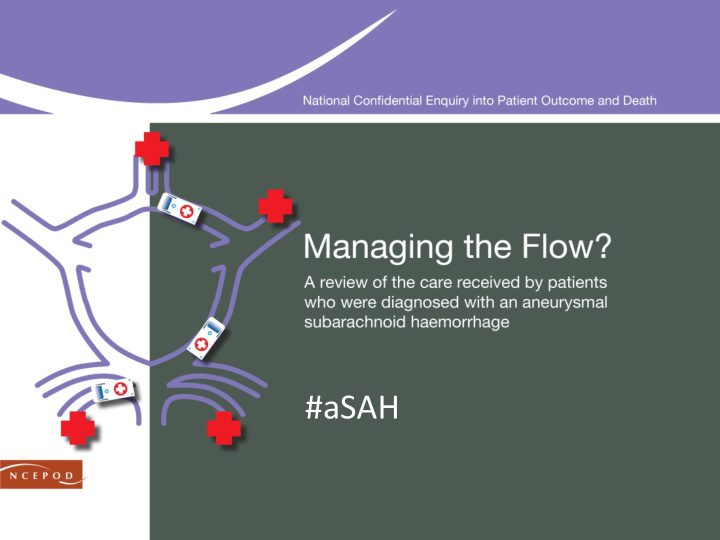



Day of Admission Time to Treatment in 246 Patients 80 70 60 50 Mon-Thurs 40 Fri-Sun 30 20 10 0 <24 24-48 >48 Comparison of time from admission to intervention by day of admission 78
79
Time to Treatment Risk of Disease-specific Complications 80
Time to Treatment & Other Complications (Advisors’ Form) Table 4.20 81
Time to Treatment & Other Complications (Advisors’ Form) Table 4.18 Table 4.20 82
Time to Treatment Functional Status at Discharge 83
A 7-day Service Networks AUDIT Interventional Radiology Surgeons 84
Grade of Surgeon/Radiologist (Clinical Questionnaire) Table 4.22 85
Procedural Complications (Advisors’ Form ) Table 4.24 Rupture during treatment 7/239 & 2/44 Thromboembolic 8/239: 4 CVA Failure to occlude: 1.7% v 0.5% Access vessel occlusion: 2.1% v 0.69% 86
Mortality Following Intervention (Advisors’ Form ) Table 4.30 Identical to ISAT 87
Re-bleeding Post-intervention (Clinical Questionnaire) Table 4.32 Cochrane Review 4.2% 88
Outcome: Re-bleeding (Clinical Questionnaire) Table 4.37 89
Delayed Cerebral Ischaemia (Clinical Questionnaire) Table 4.39 Early brain injury > vasospasm Electrolytes, cortical spreading depression, microthrombosis 90
Treatment of Delayed Cerebral Ischaemia (Clinical Questionnaire) Table 4.41 Hypertension, Hypervolaemia, Haemodilution 91
Functional Status at Discharge The Need for Rehabilitation Services 2/3 had symptoms or disability 92
WFNS Grade and Outcome The Need for Rehabilitation Services <1/4 no symptoms or disability 93
In-patient Rehabilitation (Advisors’ Form ) Table 4.47 Require formal assessment and planning ISAT @ 1y showed 1/3 cognitive impairment 94
Post-discharge Support for Patients with Symptoms or Disability Table 4.49 Advisors: inadequate in 35/164 (21.3%) 95
Functional Status at Discharge Neuropsychology Support Table 4.50 Good cognitive function = independent living, return to work 96
Organ Donation Table 5.1 50% of UK cadaveric donors = ICH 2012/13: 622/1212 Table 5.2 97
Organ Donation Reasons for No Donation * Table 5.3 * 1/8 refused by ITU consultant 19/43 = missed opportunities Audit donation rates Develop policies to increase 98
Recommendations - Tertiary Care • Relevant professional bodies should develop nationally- agreed & audited protocols that include: Initial assessment and decision-making (MDT) with documentation Informed consent Timing of intervention Perioperative care Management of complications Rehabilitation • Mental capacity of aSAH patients to give their own consent should be reviewed and a consensus document developed 99
Recommendations Tertiary Care • The nationally agreed standard (National Clinical Guideline for Stroke) of securing ruptured aneurysms within 48 hours should be met consistently and comprehensively by the clinicians treating this group of patients. This will require providers to assess the service they deliver and move towards 7 day working • Sufficient training opportunities for trainees to achieve competence • Appropriately funded rehabilitation for all patients following an aSAH 100
More recommend